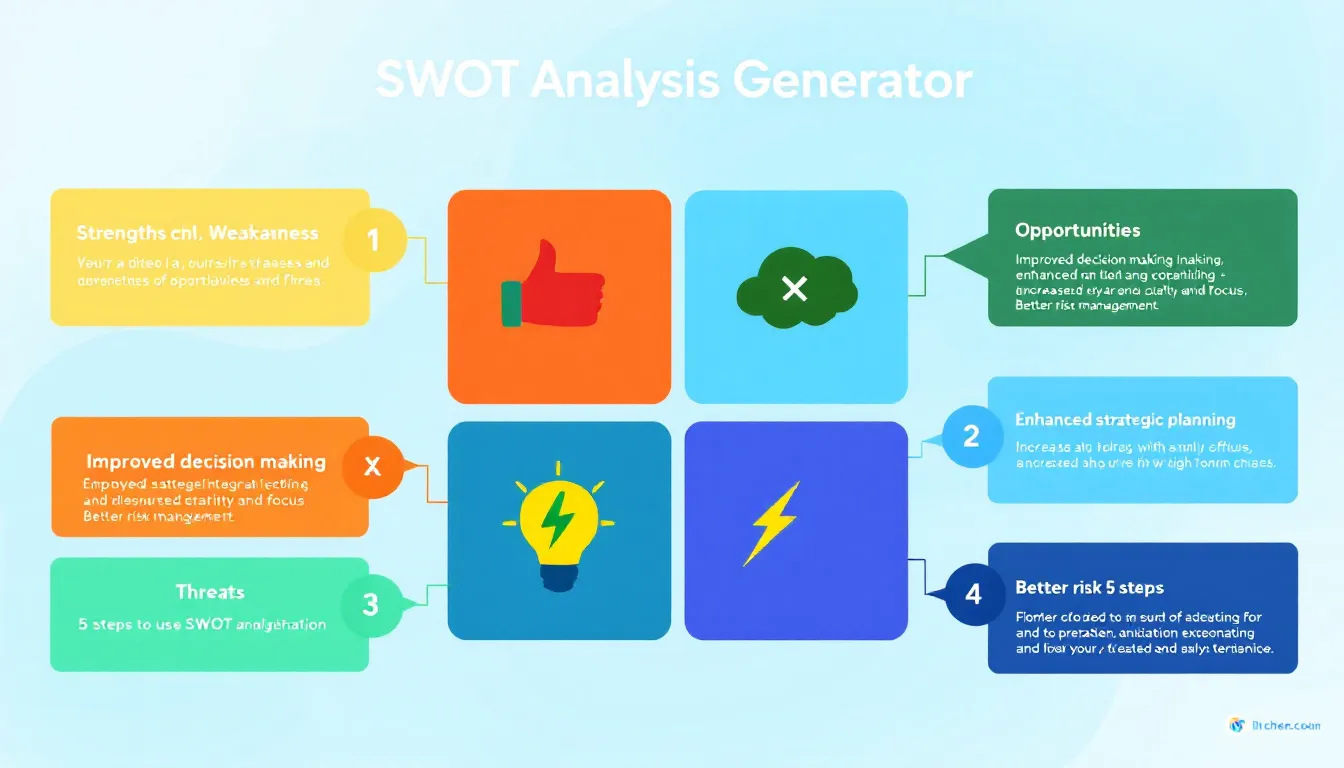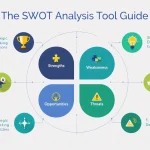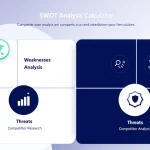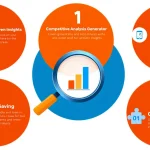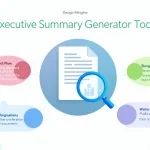Is this tool helpful?
How to Use the SWOT Analysis Tool Effectively
Follow these steps to maximize the value of the SWOT Analysis Tool and generate insightful business strategy reports:
- Enter the Business Name: Provide the full name of the company you want to analyze. For example: NextGen Robotics or Urban Wellness Clinic.
- Specify the Industry: Type in the sector where the business operates. Examples include Healthcare or Renewable Energy Solutions.
- Describe Key Products or Services (Optional): List the main products or services the business offers. You might write Telemedicine platforms, patient monitoring devices or Solar installation, energy consulting.
- Define Market Position (Optional): Indicate the company’s current status in the marketplace, such as Emerging leader in regional healthcare or Established provider of eco-friendly energy.
- List Main Competitors (Optional): Mention the key competitors that impact the business environment. For instance, MedAssist Inc., HealthConnect or GreenEnergy Solutions, SunPower Co..
- Generate the SWOT Analysis: After filling in required and any optional fields, click “Generate SWOT Analysis” to receive a detailed report.
- Review and Use the Results: The tool will display a structured SWOT analysis covering Strengths, Weaknesses, Opportunities, and Threats for the business.
- Copy and Save Your Analysis: Use the “Copy to Clipboard” feature to save or share your SWOT insights easily for future reference or strategic planning.
SWOT Analysis Tool: Definition, Purpose, and Benefits
The SWOT Analysis Tool is a practical resource that helps you evaluate key factors influencing your business’s success. SWOT stands for:
- Strengths: Internal qualities that give your business an advantage, such as skilled staff or proprietary technology.
- Weaknesses: Internal limitations or areas needing improvement.
- Opportunities: External possibilities your business can leverage, like emerging markets or new technologies.
- Threats: External risks such as competitors or market downturns.
This tool simplifies SWOT analysis, providing tailored insights based on your input about business details, industry, and competitors. It helps you understand your position clearly and identify strategic actions you can take.
Why Use This SWOT Analysis Tool for Business Strategy?
- Clear Overview: Gain a comprehensive view of internal and external factors affecting your business.
- Focused Goal Setting: Identify realistic goals based on your current strengths and weaknesses.
- Strategic Decision Support: Use analysis to guide informed decisions and allocate resources effectively.
- Competitive Advantage: Leverage opportunities and strengths to stay ahead in your industry.
- Risk Awareness: Prepare for potential threats and mitigate risks proactively.
By conducting regular SWOT analyses, you keep your business responsive to market shifts and competitive pressures.
Practical Uses of the SWOT Analysis Tool
This tool serves businesses of all sizes aiming to develop smart strategic plans. Here’s how you can apply it in real-world scenarios:
1. Launching a New Product or Service
Use the analysis to evaluate how your company’s strengths align with market opportunities and anticipate potential challenges. For example, if planning a new tech product, identify your team’s expertise (strength), gaps in R&D (weakness), emerging customer needs (opportunity), and competitor responses (threat).
2. Evaluating Market Expansion
Assess whether your current resources support expansion and what external factors might aid or hinder your growth, such as competitor presence or regulatory concerns.
3. Preparing for Competitive Challenges
Identify rivals and industry trends to sharpen strategies that leverage your strengths and guard against threats, keeping your business agile and resilient.
Summary
The SWOT Analysis Tool offers a structured, easy way to examine your business’s internal capabilities and external environment. By completing the simple form with business and industry details, you receive a customized report that supports strategic planning and improves decision making. Using this tool regularly helps you maintain clarity on your position, adapt to change, and pursue growth confidently.
Important Disclaimer
The calculations, results, and content provided by our tools are not guaranteed to be accurate, complete, or reliable. Users are responsible for verifying and interpreting the results. Our content and tools may contain errors, biases, or inconsistencies. Do not enter personal data, sensitive information, or personally identifiable information in our web forms or tools. Such data entry violates our terms of service and may result in unauthorized disclosure to third parties. We reserve the right to save inputs and outputs from our tools for the purposes of error debugging, bias identification, and performance improvement. External companies providing AI models used in our tools may also save and process data in accordance with their own policies. By using our tools, you consent to this data collection and processing. We reserve the right to limit the usage of our tools based on current usability factors.
